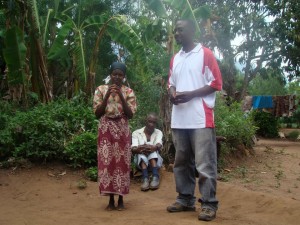Several months of heavy rains in Malawi are threatening to undo any gains that farmers in the south may have made following a prolonged dry spell.
At least 9,000 households have been affected by flooding since October 2012, according to Gift Mafuleka, deputy director for the Department of Disaster Management Affairs. The flooding has so far resulted in three deaths and significant damage to property and crops.
Mafuleka told IRIN that her department is carrying out an assessment to determine more accurately the extent of flood-related damage and the needs of those affected.
Displacement and damage
The hardest-hit areas are Phalombe, Mangochi, and Nsanje districts, all in the south of the country and in the same region that, only months ago, had been suffering from too little rain. The resulting poor harvests had left nearly 2 million people without enough food to get them through the lean season, according to an October 2012 assessment by the Malawi Vulnerability Assessment Committee (MVAC).
Now, as heavy rains continue, farmers and officials fear the floodwaters will damage crops and worsen hunger.
In Phalombe, thousands of people have been displaced by flooding, and many have evacuated to makeshift shelters in schools and churches. One school alone is sheltering 1,400 people, according to Davi Chibani, assistant district risk management officer, who is on the ground coordinating rescue and relief efforts. Other temporary camps are sheltering hundreds each.
Chibani says that if the rains do not subside soon, severe crop damage and another year of poor harvests is likely.
Anderson Vishalona, a village headman from Chikwawa District, said that floodwaters had already had a severe impact on crops in his area. Farmers who recently applied fertilizer to their maize crops are complaining that the rain waters have washed it off.
Mafuleka is urging farmers to not apply fertilizers until the heavy rains have subsided and, in the longer term, to opt for crops other than maize that are more resilient. Southern Malawi is prone to seasonal flooding and drought.
Floods could worsen
In Namasalima, a low-lying area of Zomba District, huge tracts of maize fields have been washed away by the floodwaters. Lyness Kasani, 83, is one of about 600 residents in the area whose houses and crops have been damaged. She recalled waking up in the middle of the night to find rainwater cascading down her bedroom wall. “The floor was flooded with water, and I had to use an umbrella throughout the night as my roof gave up and rain poured inside the house,” she told IRIN.
In Nsanje, a low-lying area that also experienced heavy flooding in early 2012, resident Gilbert Kaunda described how he saved a young boy about to be swept away by floodwaters. “He held on to branches, crying, as the waters lifted him up and down till I managed to reach and pull him to safety,” he told IRIN. “Had I not been there, he would surely have been swept away by the water.”
Nsanje District Commissioner Rodney Simwaka says displaced people in the area are in dire need of food, blankets and tents.
With the rains forecast to continue over most of Malawi for the next 10 days, flood conditions could worsen.




